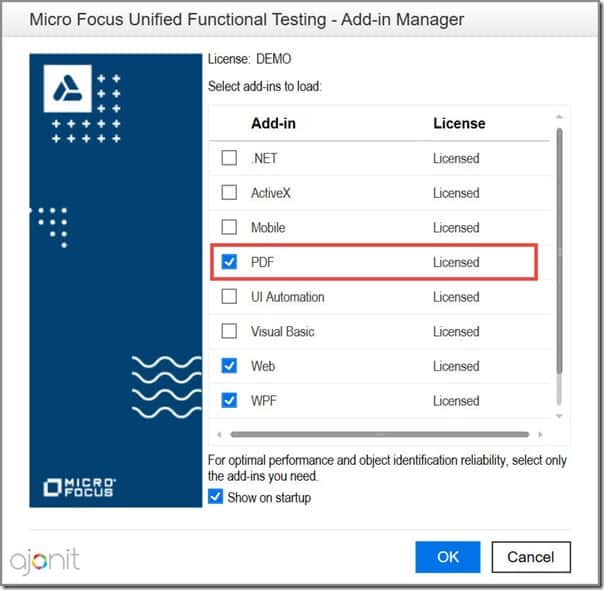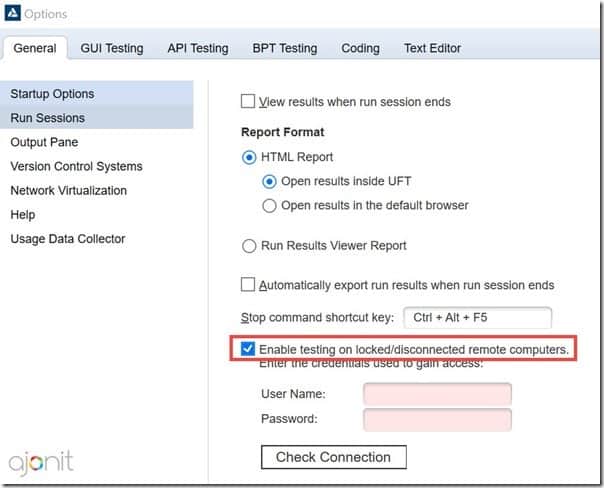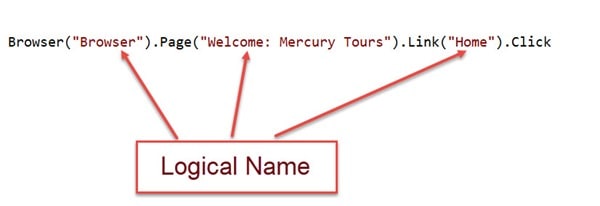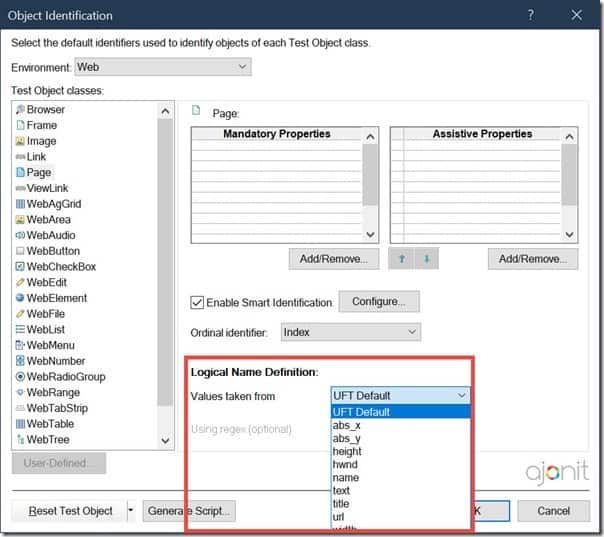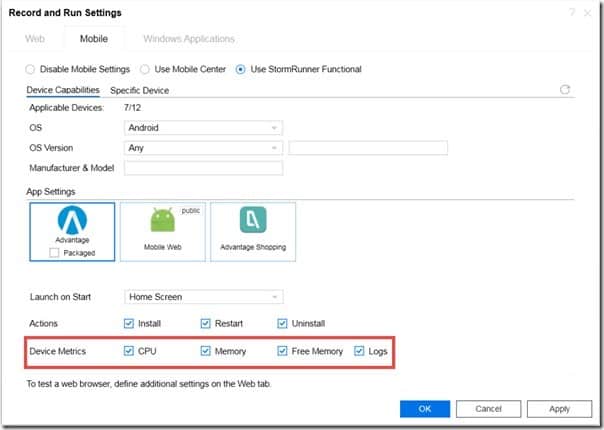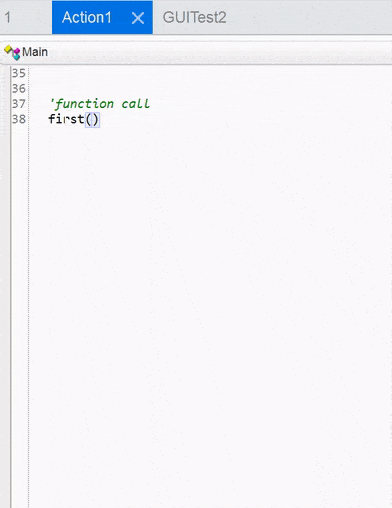What is an Exception ? How did we handle Exceptions in our Project
An exception is an unexpected or unwanted event or error because of which application crashes leading to test failure.
We have used recovery scenarios to handle the exceptions. we have called functions within the recovery scenarios to handle these exceptions.
What are Recovery scenarios
While executing our scripts
we may get some UNEXPECTED/UNPREDICTABLE errors and window pop up errors.
To “recover” the test (for continue running) from these unexpected errors we
use Recovery Scenarios.
What Constitute Recovery
Scenarios
Recovery scenario consists of the following types.
a. Trigger Event: The event that interrupts
our run session.
For example, a window that may pop up on screen or a UFT/QTP
run error.
b.
Recovery operations : The operations to perform to enable UFT to continue running
the test after the trigger event interrupts the run session.
For example,
Clicking an OK button in a pop-up window or restarting Microsoft windows.
c. Post-Recovery Test Run Option: The
instruction on how UFT/QTP should proceed after the recovery operations have
been performed and from which point in the test UFT should continue, if at all.
For example, we may want to restart a test from the beginig or skip a step
entirely and continue with the next step in the test.
NOTE: Recovery scenarios are saved in
recovery scenario files having the extension .qrs. A recovery
scenario file is a logical collection of recovery scenarios, grouped according
to our own specific requirements.
What is the process of creating a Recovery Scenarios
The following are steps mentioned for creating recovery scenario.
- Defining the trigger event
that interrupts the run session.
- Specifying
the recovery operations required to continue.
- Choosing a post-recovery test
run operation.
- Specifying a name and
description for the recovery scenario.
- Specifying whether to associate
the recovery scenario to the current test and or to all new tests.
How
Exactly does the Recovery Scenario Mechanism Works
When UFT/QTP gets an error, it
will check for any associated recovery scenarios. If any recovery scenario is
associated, then UFT will identify the Object/Condition specified in trigger
event. If that Object/condition matches, then UFT executes the specified
Recovery Operation. Specified Post Recovery Operation will also be executed
after the Recovery Operation.
What are the Different reasons
which will generate errors in your project
If we get an error, that is
because of 3 reasons..
1.Scripts Issue: A
poor script development will give poor result. Because of this we get Test Run
Errors.
2.Application Issue: Application generates
unwanted pop ups or through's unexpected events in script run-time.
3.Environment Issue: Application
suddenly crashes because of environment issue.
How do
we handle the exceptions generated by application
We have two types of Exceptions
that will be generated by Application.
a. Unwanted popup windows: The unwanted/unexpected
Popup windows will disrupt the Script and cause the failure. To handle them we
have used Popup Recovery Scenario. In this, we have specified the window name
and how to handle it by using a recovery operation.
b. Object Related Errors: Sometimes we get errors like
"Page cannot be displayed" or an application is opened, due to
an internal problem, the window is not responding and all of the objects are in
disable state. In this case, we can use Object State Recovery Scenario
which will execute a Recovery Operation based on Object State that is already
provided by me when creating it.
How do we handle the exceptions generated by UFT/QTP
UFT generates exceptions and
those are called as Test Run Errors. We can handle Only object and Object Data
Related Test Run Errors. The errors are
1.Object is disabled
2.Object
not found
3.Object not visible
4.Item in Menu or List not
unique
5.More than one Object Respond
to its physical description
6.Item in Menu or List not
found.
How do
we handle the exception raised because of environment
An environment issue causes the
Application Crash or No Response from the Application. For application Crashes
we use the Application Crash Recovery Scenario. We can define a recovery
scenario to set the application normal. For no Response we can use Object state
Recovery scenario to perform a recovery operation.
What is trigger event
Trigger event is an event that
interrupts our run session which will cause Test Failure. This can happen in
both UFT and Application.
What is Recovery operation
The operation which recovers UFT to run the test after a trigger event interrupts the run session.
What are the types in Recovery
Operation
1.Function Call: We
can specify a function to be executed when performing the recovery operation.
2.Keyword or Mouse
Operation: In this there are multiple sub
operations
- Click Default button/ Press the ENTER Key.
- Click Cancel
button/ Press the ESCAPE key.
- Click button
with label.
- Press key or Key
combination
By using Click button with label,
we can specify a button which is there in the application. By using Press Key
or Key combination, we can specify a key to be pressed or with a combination
ctrl/alt to be pressed in the recovery operation.
3. Close Application
Process: We can specify a process to be closed when we get an error. It display current running list of processes in our machine. We can choose
any of the process to closed when that Recovery Scenario is executed.
Where do we write Recovery
Functions
We can write Recovery Functions
in Libraries and specify those libraries when creating the recovery scenario.
We can create libraries from UFT using Create new function library option. We
can also use .vbs or .txt files as libraries.
How many recovery
scenarios have been developed in your project
We have developed over 10
recovery scenarios for below purposes :
- To handle a message that is displayed when an ActiveX object on an
Internet Explorer page may be unsafe.
- To handle Internet Explorer
ASP errors.
- To handle a message that is
displayed when a file is selected for download.
- To handle a message that is
displayed when Internet Explorer is about to redirect to a new
Internet site.
- To handle a message that
is displayed when an object cannot be fount in internet Explorer.
- To handle security Alerts.
- To handle Application
Generated Object Related Exceptions.
- To handle UFT/QTP Generated
Exceptions.
- To handle Application Crashes
What
are the Recovery Scenarios used in Your Project
We have used all of the recovery
scenarios Popup, ObjectState, TestRunErrors and Application crash.
What is the extension for
recovery scenario file
QRS---- Quicktest Recovery
Scenario.
Loading Recovery scenarios at run time or dynamically
Set qtApp = CreateObject("QuickTest.Application")
Set qtTestRecovery = qtApp.Test.Settings.Recovery
qtTestRecovery.Add"C:\TEST\Project\RecoveryScenario\Testfailurenote.qrs", "TestFailing" , 1
qtTestRecovery.Add"C:\TEST\Project\RecoveryScenario\TestfailureNote.qrs", "TestNote" , 2
For intIndex = 1 To qtTestRecovery.Count
qtTestRecovery.Item(intIndex).Enabled = True
Next
qtTestRecovery.Enabled = true
qtTestRecovery.SetActivationMode "OnError"
Set qtApp = Nothing
